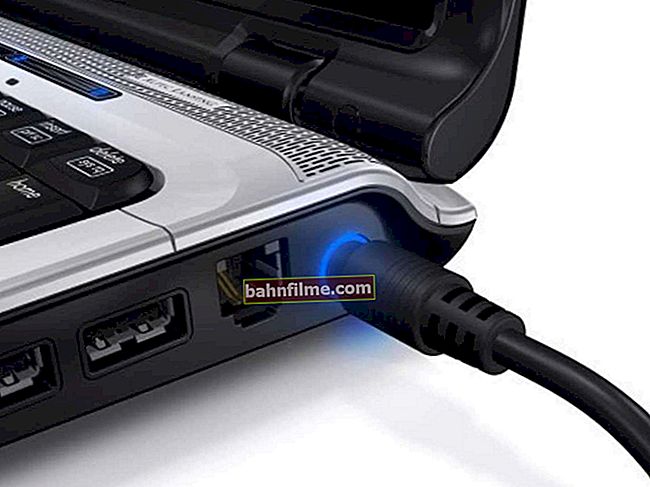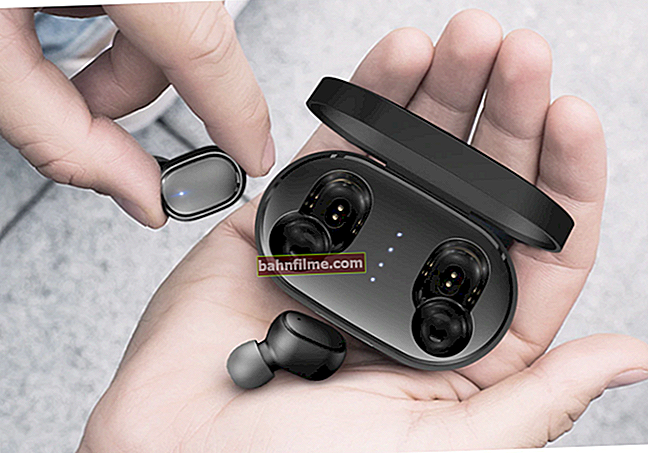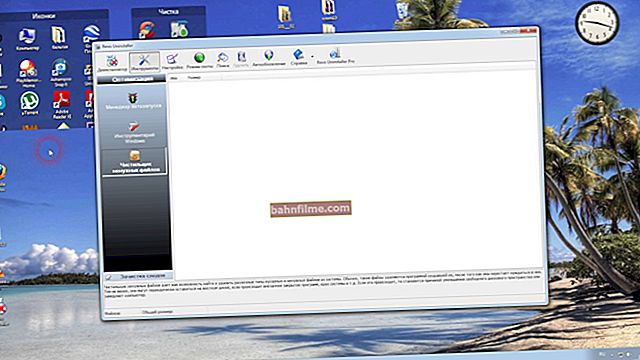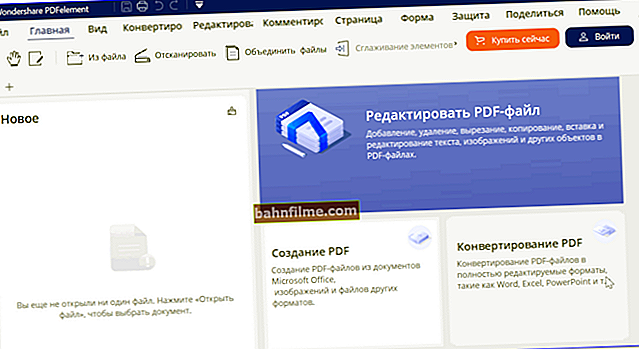 Good day!
Good day!
If you have some kind of camera or TV tuner, and you want to make your broadcast on the local network (or the Internet), then this note is for you. 👌
However, no one bothers to broadcast with the same success just some movies / music, for example, from a PC to TV or mobile gadgets ...
The only thing, keep in mind that your computer (which is broadcasting) must be sufficiently productive (to avoid lags and freezes). In addition, you need to have a good and stable network connection (at least 10 Mbps). Help: Internet speed test.
In this post, I will go through all the necessary steps step by step, both for broadcasting over a local network and over the Internet. Of course, there may be slight differences in your case (for example, when choosing a capture device ...).
Okay, closer to the subject ...
*
Broadcasting video to the network: an example of setting up broadcasting
Broadcast start
STEP 1
And so, for our task we need a universal cross-platform VLC player. The program allows you not only to watch streaming video on the network, but also to create a broadcast yourself ...
VLC
Developer site: //www.videolan.org/vlc/index.ru.html

The main advantages of the player:
- "omnivorous": plays files, external drives, network broadcasts, etc .;
- supports all popular file formats: MPEG-2, MPEG-4, H.264, MKV, WebM, WMV, MP3 (even if you don't have codecs installed on your system);
- works on Windows, Android, Linux, Mac OS X, iOS;
- the program is free (and without ad inserts).
Note: it is highly desirable to install this player both on the device from which you will broadcast, and on the one on which you will receive the broadcast. In my example below, I did just that ...
STEP 2
Now you need to launch VLC on the computer (device) from which we will broadcast.
Then go to the menu "Media / Transfer" (Ctrl + S). See screenshot below.

Transmit
STEP 3
Next, you need to choose what we will broadcast:
- file;
- disk;
- TV tuner, camera or other capture device.
In my example, I just added one of the movies.

to add a file
STEP 4
Then you need to clarify the broadcast source: when you select a regular file (as in my case), you can immediately click next (i.e. next) ...

Following
STEP 5
An important step!
You need to select from the list "HTTP" and press the button "Add" ... You will see a tab with the same name, in which you can specify port and way broadcast (by default port 8080). I recommend not to change these values and proceed to further settings ...

Stream output (port)
STEP 6
In this step, you need to select the broadcast quality (selected experimentally, depending on your needs). For example, I stream a video from a PC to a phone - so I chose a video for an android (note: the difference between the original and the compressed video is almost imperceptible on the phone screen).

Quality Assignment
STEP 7
Here you can set additional. broadcast parameters. In most cases, you can immediately press "Flow" .

Flow
STEP 8
When you start the broadcast for the first time, Windows Firewall will ask you to give permission for VLC to work - just agree by clicking on "Allow access" .

Allow access
STEP 9
If the broadcast has started, you will see a ticking time timer (see the bottom of the program window). That is, from this moment - the broadcast can be received on another device and see "something there ...". 👌

The broadcast is on
How to watch the broadcast
Local network
Note!
Those. both the computer (which is broadcasting) and the device (which is receiving the broadcast) are on the same shared local area network. In my example below: the broadcast is from a PC, and is received on a phone under an android. Both devices are connected to the same Wi-Fi network.
STEP 1
First, we need to find out the local IP address of the computer that is broadcasting. This can be done through the command line: by entering in it ipconfig and hitting Enter.
Cm.the screenshot below is my IP 192.168.0.106 (this is needed for further connection).

ipconfig / Command Line
By the way, you can also find out the IP addresses in the router settings.

IP address in the router settings
STEP 2
Now we launch VLC on the device from which we will receive the broadcast (for example, a phone). Next, go to the program menu and select "Flow" (or "open broadcast URL").

Stream / VLC
STEP 3
Next, you need to specify the network address - //192.168.0.106:8080
Important!
1) Instead of 192.168.0.106 - you will have your own IP address of the computer that is broadcasting (for example, 192.168.10.102 or 192.168.0.103). We learned this IP address in STEP 1.
2) A different port can be used instead of port 8080 (if you changed it when creating the broadcast).

VLC for android
STEP 4
If you indicated everything correctly, then in 3-5 seconds. the device will "download" the cache and VLC will start showing the broadcast ...

Broadcast
Of course, several devices can be connected to one broadcast at the same time ...

Photo broadcast
On the internet
STEP 1
The whole difference here will be reduced to the fact that we need to find out not the local IP address (which the router "gave" to us), but the external / global one (from the PC that is broadcasting). This can be done in different ways, I give a link to the instructions below ...
How to find out your local and global IP address - //ocomp.info/kak-uznat-ip-adres.html
For example, I am impressed by the Speccy utility - just open the Network section and you know both the local IP and the external ...

Speccy - view IP-addresses, Network section
Of course, this information can also be found in the settings of the router. See screenshot below as an example.

Global IP address
STEP 2
So that you can connect to your broadcast from the Internet, you need to open (forward) the desired port (in our case 8080). By default, for security reasons, the router does not allow connecting from outside ...
This is usually done in the settings of the router in the section "Port forwarding" (Port Forwarding). In general, on my blog there is a detailed note on this topic (for beginners), the link is below ...
To help!How to forward ports on a router (open ports for games, Skype, uTorrent and other applications) - //ocomp.info/kak-probrosit-portyi-na-routere.html

port forwarding
STEP 3
Now we launch VLC on the device where we will receive the broadcast and open the network address of the form: //89.118.10.32:8080
Important!
Instead of 89.118.10.32 - you will have your own external IP-address (which we specified in STEP 1, see a little above).

Entering the global IP
STEP 4
If the above settings were specified correctly, then in a few seconds the broadcast will start showing (see the screen below). Mission accomplished?!

Video went
*
Add-ons are welcome ...
Happy work!
👋









